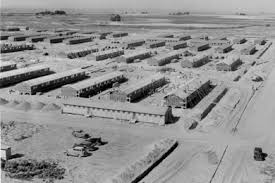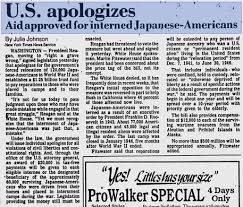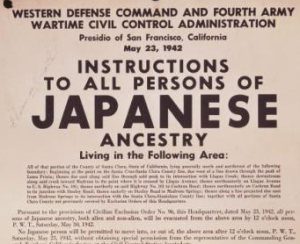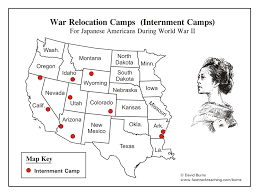Japanese Internment in US
Chris Plummer
(Asked to do this topic)
Summary- During WW2, Americans had a dark time in their history. During the 1940’s and after pearl harbor. All US Japanese citizens were considered dangerous. The bombing of pearl harbor cause fear in Americans over the Japanese. The US government decided to act. Under President Roosevelt, 1942, he signed an executive order having all people with Japanese ancestry relocated into internment camps. Over 127,000 people were imprisoned in the camps. Almost two thirds of these people were Nisei, Japanese Americans born in the US. The Japanese saw this as unjust and unfair whereas the Americans saw it necessary because of the pearl harbor invasion and that many people feared the Japanese. In the 10 internment camps, Japanese had the option to work for $5 a day and children were expected to attend school. Many evacuees elected representatives to discuss their grievances to American officials. The food their was far from great and anyone trying to flee would be shot. In 1946 the Japanese were released and the US government tried to compensate for this misunderstanding by paying money to families interned. $20,000 per person.
The first key factor in this conflict was the Japanese and their bombing on Pearl Harbor. This is what sparked all the fear of Japanese in America. Even though it the Japanese did commit an attack on the US, I do think the US government actions were a bit overboard since the bombers were not US citizens, and you can’t blame the entire body of Japanese US citizens for the attack.
The second key factor in this conflict is the US government(mostly the president). The government was the deciding factor in the decision to put these Japanese into camps. There are various reasons that the Government may have don’t this. Some may be pressure from the people since they were scared, so they felt obligated to do this, or they may think there was Japanese spy’s so the only way to capture them was to just put all Japanese into internment camps.
Even though this conflict has already been resolved, a suggestion for peace from me would be to release all the Japanese in the camps and see if any more Japanese related attacks happen and act as necessary. Obviously, not all the Japanese could be bad.
Pictures
Map—–




Your post was really interesting, I learned a lot about the internment of Japanese. I agree with you that not all Japanese were bad. However, if that had waited and seen if any Japanese attacks had happened, you don’t know how bad that “attack” could have been. I see the reason to put Japanese into internment camps, but I also see how putting them into camps can bee seen as inhumane and unjust. Especially, if they have been Japanese and serving our country. Wow, the President must have been under a lot of pressure in deciding what to do!!
LikeLike
I think that was a pretty well written summary. Learning about how the Japanese were treated after Pearl Harbor was very interesting, and in reminded me a lot of how the Germans were treating the Jews; through the use of concentration camps. I can see where the need to put all the Japanese in camps came from, but that’s categorizing all the Japanese based on the actions of a few. This still happens today, when we classify middle-easterners as evil based on the actions of a groups of terrorists or individuals that commit crimes against humanity. That just seems very unlucky for the Japanese that were again the bombing in the first place.
LikeLike